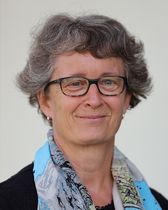Chronic pain is a significant global health concern and access to pain control is a basic human right. While the burden of chronic pain is well described in high-income countries, there is limited data in low- and middle-income countries (LMICs), in particular in marginalized communities such as pastoralists. A study by Swiss TPH and partners published yesterday in the peer-reviewed journal PAIN now found that there is a high prevalence of chronic pain among Somali pastoralists in Ethiopia, especially among women and the older population.

There is a high prevalence of chronic pain among Somali pastoralists in Ethiopia. (Photo: Pastoralist in Chad, Swiss TPH/Christian Heuss)
Chronic pain affects an estimated 20% of people worldwide exerting both a person burden on well-being but also a strain on the economy. While sound data exists for high-income countries, not much is known about chronic pain in LMICs. Pastoralists in particular remain underrepresented in pain research, as studies focus often on infectious diseases such as zoonoses in this population group.
A study published yesterday in the peer-reviewed journal PAIN now sheds some light on the prevalence, characteristics and therapeutic practices of chronic pain among pastoralists in the Somali Regional State of Ethiopia. The researchers conducted a cross-sectional household survey with face-to-face interviews with 299 adult pastoralists in the Somali Regional State of Ethiopia.
High burden of chronic pain, especially among women
The findings show that 27.6% of pastoralists reported chronic pain with higher prevalence among women (34.7%) compared to men (17.0%). The study also found that chronic pain increased with age, ranging from 5.4% among individuals aged 18 to 34 years to 69.1% among those aged 55 years and older. The body parts that were most affected by pain were the knees, lower back and head.
“The findings of our study provide for the first time in-depth insights into the chronic pain burden of this marginalized population,” said Eleonore Baum, first author and researcher at the Eastern Switzerland University of Applied Sciences (OST). “What was particularly striking is the difference between men and women, hinting toward broader health inequalities in pastoralist communities including for instance female genital cutting.”
The study was led by Swiss TPH in partnership with the Jigjiga University, the Armauer Hansen Research Institute, the University of Basel and OST. The project was co-funded by the Swiss Agency for Development and Cooperation (SDC).
More targeted health interventions
“The findings in this study are crucial to develop targeted interventions in order to address the unique pain management needs of pastoralist communities,” said Nicole Probst-Hensch, Head of the Department of Epidemiology and Public Health at Swiss TPH.
The authors for instance recommend that pastoralist women and older persons should be considered a priority group for health interventions and that future health initiatives and treatments should target both mental health and chronic pain. Another important recommendation is to raise awareness among health professionals and other stakeholders about the secondary effects of chronic pain for pastoralists, their animals and their communities.
Perception of pain and resilience
Another interesting finding of the study was that there is currently not one universal word to define pain. “It was only by combining qualitative and quantitative approaches that we were able to formulate the right questions for the pastoralists,” said Probst-Hensch. “This awareness is crucial for providing adequate pain management, for example when extending cancer therapies to such population groups.” The authors therefore conclude that more research is needed on pain management in low-resource settings.
Contact

Nicole Probst-Hensch
Professor, PhD (Pharmacy and Epidemiology), MPH
Head of Department, Group Leader, Head of Unit
+41612848378
nicole.probst@swisstph.ch